
All communication with Planorama is done SSL encrypted, and you will need an IP locked APIKEY before you can start. Contact the Planorama support team to get your key, if you haven’t already got it.
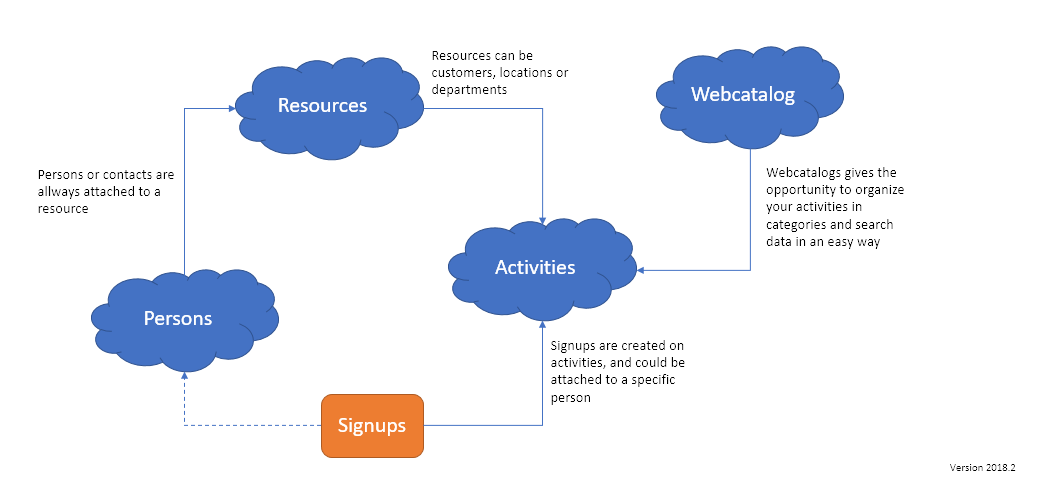
Planorama REST API consists of 5 endpoints, 4 of which works close together, and an integration endpoint that helps other integrations to deliver data to and from Planorama.
Use this endpoint to get activity data and create signups
Use this endpoint to manage persons (contacts), often used by CRM integrations
Use this endpoint to manage customers, departments or locations, often used by CRM integrations
Use this endpoint, if your company uses Planorama to organize activities in categories and templates
This endpoint is made for other integrations, e.g. callbacks and webhooks.
Different approaches to create a successfull integration with your website
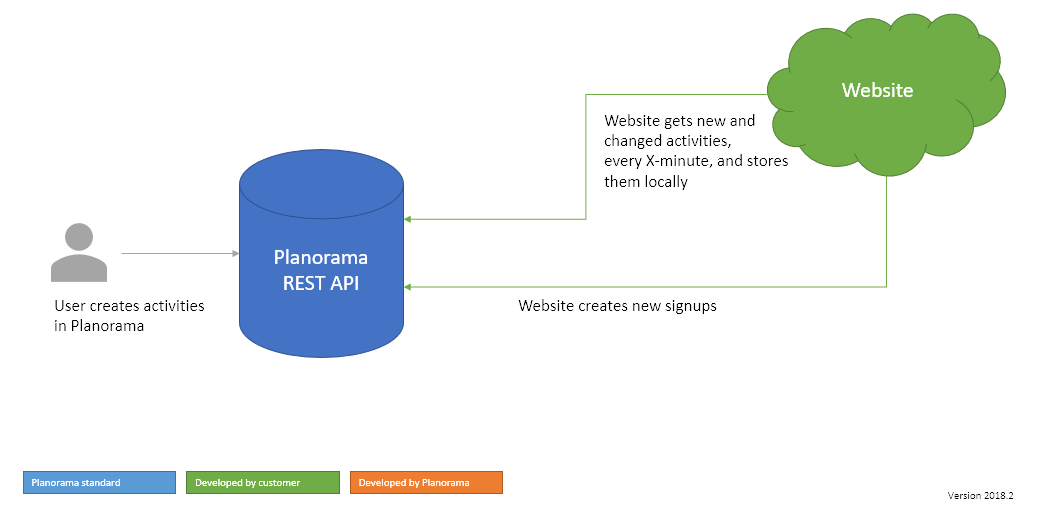
Heavy on development for the customer, but very flexible in the terms of design and SEO optimization etc.

Some development for the customer, but very flexible in the terms of design and SEO optimization etc. Customer must create courses manually in both Planorama and the website

Less development for the customer, but still flexible in the terms of design. Customer needs a standard feed reader

No development for the customer, but still flexible in the terms of design.
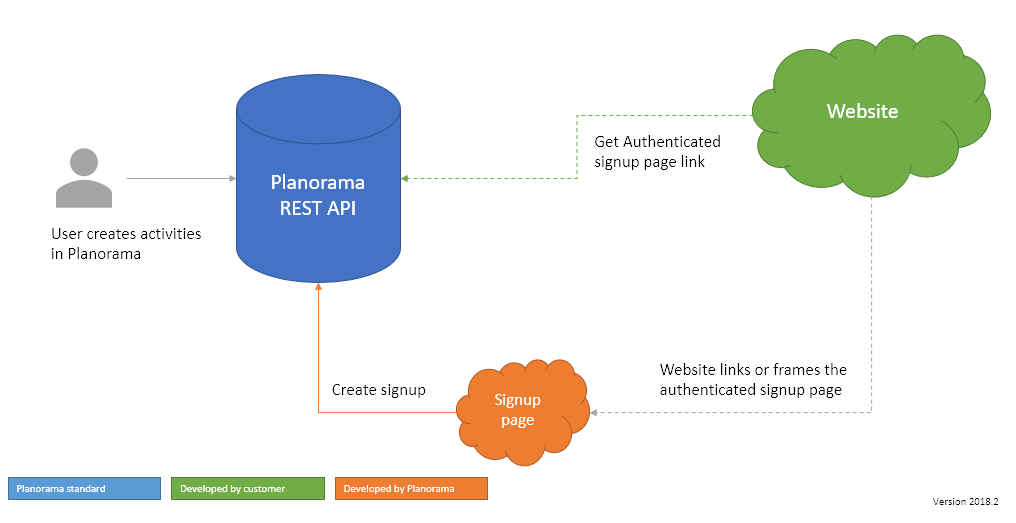
Less development for the customer. Customer needs to validate the user, and Planorama needs to synchronize the user database
Different approaches to create a successfull integration to your ERP system

Heavy on development for the customer and Planorama, but very flexible as Customers can be created both in Planorama and in ERP
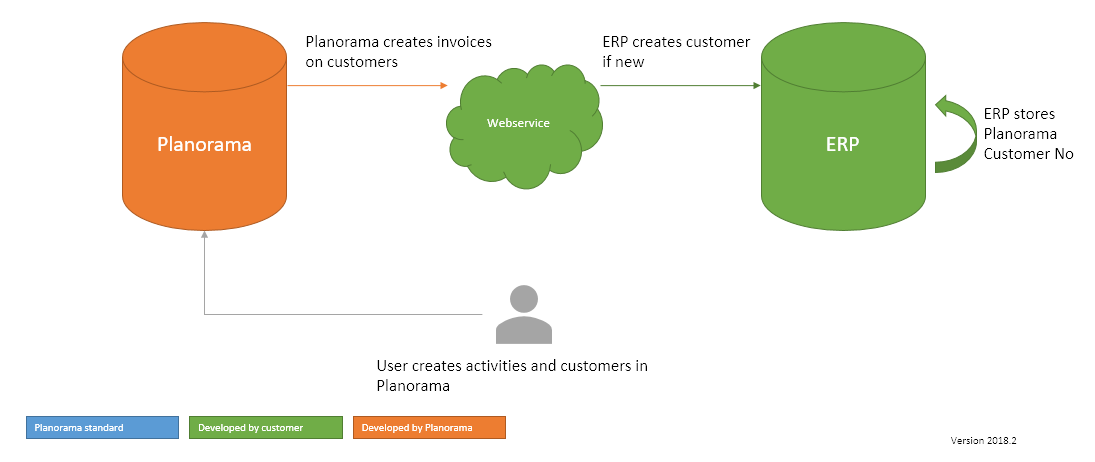
Some development for the customer and Planorama, but customers are created in Planorama – there is now communication back from the ERP

Some development for the customer and Planorama, but customers are only created in ERP
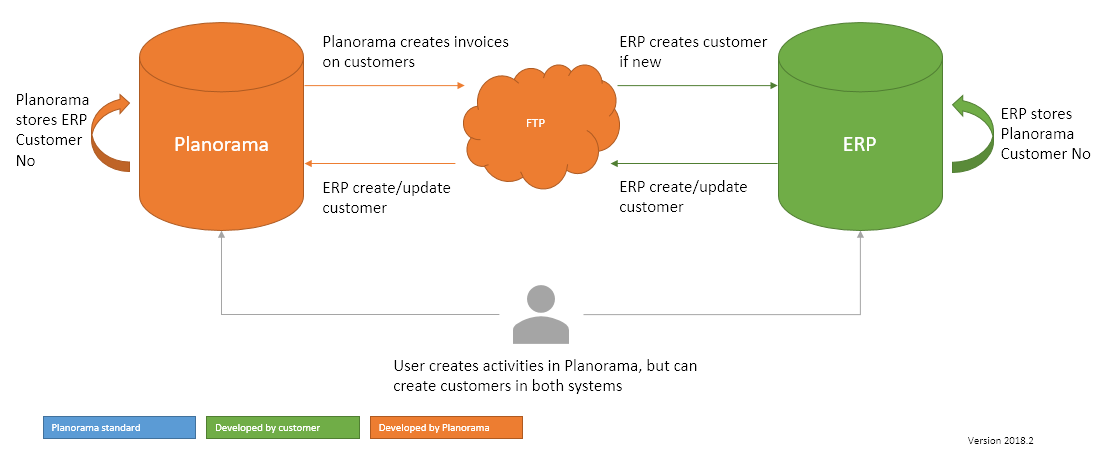
Heavy on development for the customer and Planorama, but very flexible as Customers can be created both in Planorama and in ERP
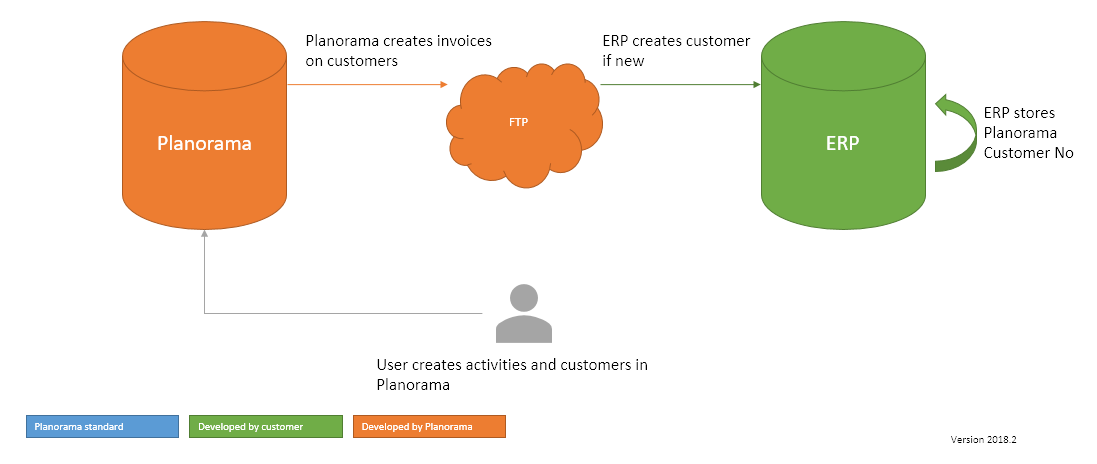
Some development for the customer and Planorama, but customers are created in Planorama – there is now communication back from the ERP

Some development for the customer and Planorama, but customers are only created in ERP

Planorama and CRM have a natural coincidence in data, including customer and person data.
CRM integration will naturally consist of a synchronization of data, as well as a plot of data that is owned by Planorama and displayed in CRM, eg. course and participant data.
Planorama offers the opportunity to synchronize your organization and person data through a simple XLSX or CSV import.
Planorama needs 2 files, one representing the organization and one representing the employees.
Download organization example file
Download person example file
Delivering data to Planorama is easy, you just need to dump your organization file unto our FTP, and we will import them everyday. The import is intelligent, so it will create new employees, inactivate old and also manage organization changes.
Organization units must be read in hierarchically. I.e. ”The top of the hierarchy” must appear in the import, before the underlying divisions can be imported. Example:
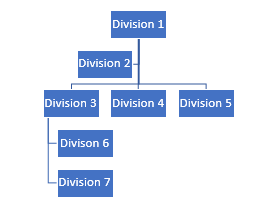
The above divisions must imported in the following order:
Division 1, 2, 3, 4, 5, 6, 7
Organization units may have an unlimited number of subdivisions, but only one above in the hierarchy.
Planorama identifies persons by a username. Any synchronisation of persons must therefore contain a username.
The username is typically generated based on a payroll, employment number or AD email.
The username may not be the person’s name, initials or social security number.
Planorama may request that the username is prefixed with an abbreviation of the customer’s name, such as "COMPANY_xxxxx".
The organizational affiliation of persons in Planorama is compared either by using a division name or a division number.
A person can only belong to one organization unit.
Contact the Planorama support team to get your FTP access and get your synchronization up and running
The Planorama Webservice API, is of January 2018 considered deprecated. If your organization need assistence og documentation about the API, please contact the Planorama support team.
Description on the technical IT framework of Planorama
Planorama is a Software As A Service (SAAS) focusing on maximizing the training and communication tasks involved in the competency and quality development of organizations.
Planorama delivers tailored solutions that enable the customer to gain a competitive advantage, by providing the platform from where the organization to may train employees efficiently and to track qualitative development whilst cutting cost.
Planorama can be accessed through any browser supporting HTML and JavaScript.
Planorama is developed and tested on the following browsers;
We advise the use of a PC or MAC based browser, when using the administrative features of Planorama
All features may also be accessed from a SMARTPHONE browser. However, the administrative module is not optimized for mobile usage.
All features for the end-users is available through the IPhone and Android App, allowing for a new communication channel.
Planorama is also available as an app, through Apple Store, Google Play and Windows Phone Store, supporting;
Planorama is responsible for storing data according to Danish law and to comply with The Danish Personal Data Act.
Planorama can exchange data with other systems, in most cases employee data are imported from an existing database, ie. A payroll system.
Data can be access or delivered through web services. All services are run securely with HTTPS.
All interaction with the Planorama backend database is done by the Planorama system.
It is however possible to interact with the system through and API, built on a series of Web services.
All access to the API are validated upon request. Users must have a valid API key, and all keys are bound to one or more IP’s.
All access is done with securely through HTTPS. All API keys are maintain by (and only by) the Planorama developer team.
Planorama is built as a tree structure where all users are attached to one tree node. It is only possible for a Planorama user to access data within his own branch of the tree structure.
Both the Frontend, Smartphone App and Web service API is based on this level of security. It is however possible for the Planorama Developer Team to Import data across the tree structure.
The Planorama system is run on a virtual platform, which allows us to scale the solution as we find fit. The Planorama database is run on separate servers, but are only accessible internally by the Planorama webservers.
The Planorama system, including uploaded files, images etc. and the Planorama Databases are running on a 24hr daily backup routine. Database backups are stored in 7 days, then deleted permanently. System and file backups are incremental backups.
Planorama servers are monitored 24hours a day, guaranteeing at least 99% uptime.
All development is done on other servers, not influencing the production servers at all.
Planorama can only be accessed with a valid login. Logins are stored in the Planorama database. All access is secured by HTTPS 128-bit encryption using AES_128_CBC with SHA 1 for message authentication and RSA as key exchange mechanism. The connection uses TLS 1.0. The current Planorama certificate is verified and created by Digicert(.com).
Planorama uses cookies, but only with internal data to help control the interface.
© Planorama ApS - Knud Bro Alle 9 - DK-3660 Stenløse. All rights reserved.